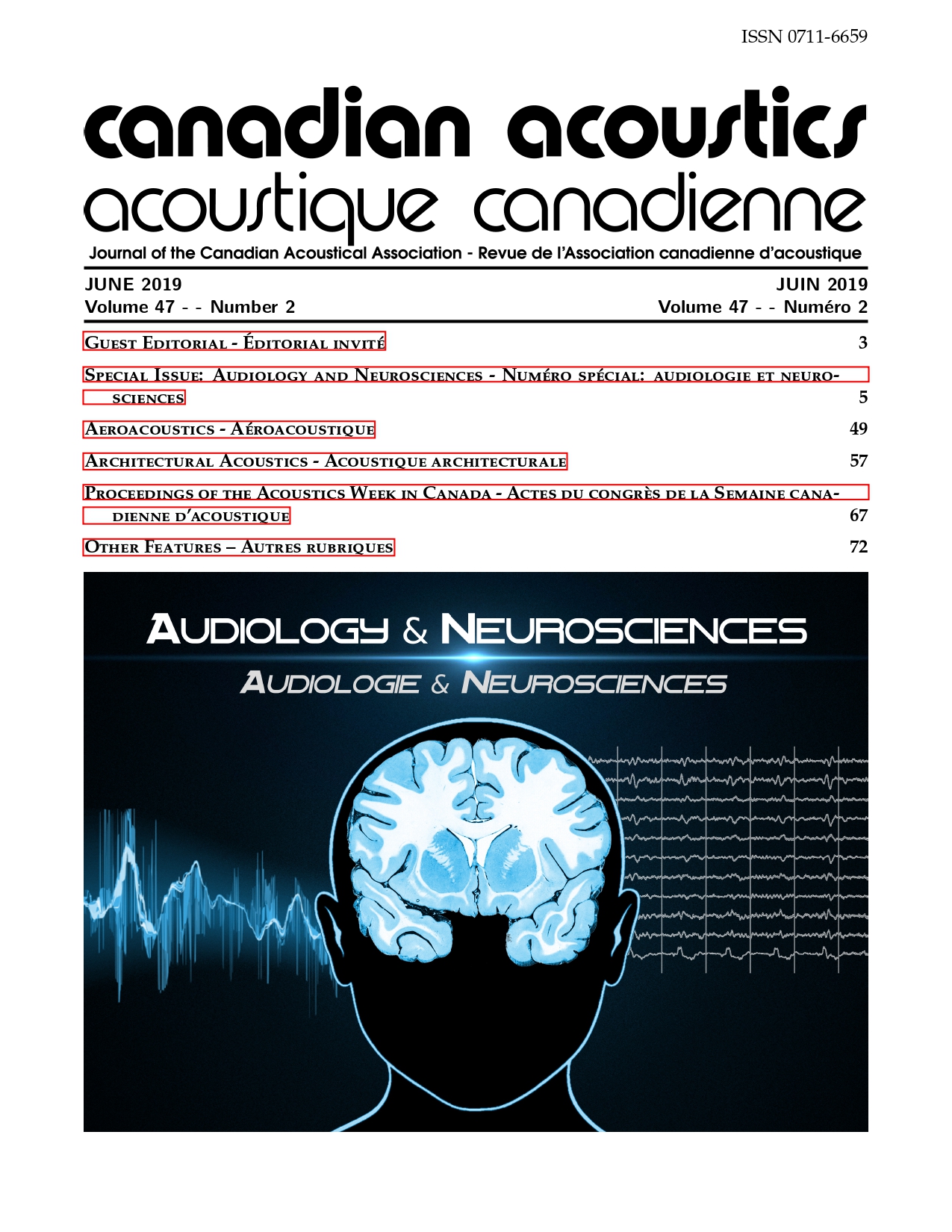The Effects of Bilingualism on Speech Evoked Brainstem Responses Recorded in Quiet and in Noise
Keywords:
Sub-cortical Auditory Evoked Potentials, Speech-ABR, bilingualism, experience-dependent plasticity, sensory enrichmentAbstract
The main objective of the present study was to investigate the effect of sensory enrichment, such as bilingualism, on the subcortical processing in quiet and adverse listening conditions such as in the presence of noise. More specifically, the aim of this investigation was to identify some neural biomarkers at brainstem level distinguishing bilinguals from monolinguals. Forty-one 18- to 25-year-old adults participated in the study: 19 monolinguals and 22 bilinguals. Their language fluency was assessed with the Language Experience and Proficiency (LEAP) questionnaire. Auditory Brainstem Responses (ABRs) were recorded using click and speech /da/ stimuli in quiet and also in noise for the latter. No significant differences between the two groups were observed for click-evoked ABR. The speech-evoked ABR transient waves (V, C) and the periodic region (D and F) latencies were longer for the monolinguals compared to the bilingual group. The Frequency Following Responses (F0 and F1) of the speech-evoked ABR were similar for the two groups in quiet and in noise. Results suggested that monolinguals need more time to process speech stimuli than their bilingual peers. Early in the auditory system, the neural responses related to speech processing in the absence or the presence of background noise seem to be less resilient when compared to those of adults who are fluent in two languages. Bilingualism could stimulate the automatic sound processing abilities of the auditory system in a way that makes it highly efficient. Furthermore, this study demonstrated the applications of speech-ABR and its potential usefulness as a clinical biomarker.
Additional Files
Published
How to Cite
Issue
Section
License
Author Licensing Addendum
This Licensing Addendum ("Addendum") is entered into between the undersigned Author(s) and Canadian Acoustics journal published by the Canadian Acoustical Association (hereinafter referred to as the "Publisher"). The Author(s) and the Publisher agree as follows:
-
Retained Rights: The Author(s) retain(s) the following rights:
- The right to reproduce, distribute, and publicly display the Work on the Author's personal website or the website of the Author's institution.
- The right to use the Work in the Author's teaching activities and presentations.
- The right to include the Work in a compilation for the Author's personal use, not for sale.
-
Grant of License: The Author(s) grant(s) to the Publisher a worldwide exclusive license to publish, reproduce, distribute, and display the Work in Canadian Acoustics and any other formats and media deemed appropriate by the Publisher.
-
Attribution: The Publisher agrees to include proper attribution to the Author(s) in all publications and reproductions of the Work.
-
No Conflict: This Addendum is intended to be in harmony with, and not in conflict with, the terms and conditions of the original agreement entered into between the Author(s) and the Publisher.
-
Copyright Clause: Copyright on articles is held by the Author(s). The corresponding Author has the right to grant on behalf of all Authors and does grant on behalf of all Authors, a worldwide exclusive license to the Publisher and its licensees in perpetuity, in all forms, formats, and media (whether known now or created in the future), including but not limited to the rights to publish, reproduce, distribute, display, store, translate, create adaptations, reprints, include within collections, and create summaries, extracts, and/or abstracts of the Contribution.


